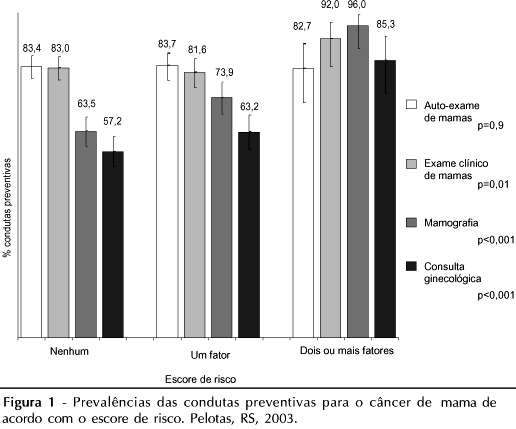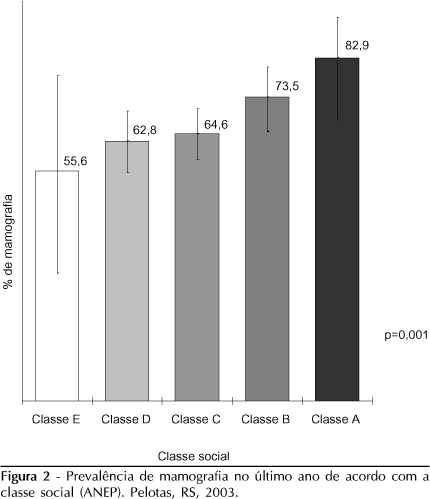OBJECTIVE: To evaluate the prevalence of secondary prevention of breast cancer and associated factors. METHODS: A population-based cross-sectional study was conducted in the city of Pelotas, southeastern Brazil, in 2002. The study sample comprised 879 women aged 40 to 69 years. Information was collected on demographic, social, economic, behavioral, biological and care management variables. Statistical analysis based on Poisson regression model was carried out. RESULTS: The prevalence of breast self-examination (BSE) was 83.5% (95% CI: 80.9-85.9). Of them, 80.4% (95% CI: 77.3-83.2) carried out BSE at least once a month. The prevalence of clinical breast examination was 83.3% (95% CI: 80.6-85.7). Mammography was occasionally performed in 70% (95% CI: 66.8-73.0) of the sample. Of these women, 83.7% (95% CI: 80.5-86.6) underwent mammography at least once in the last two years. Sixty-two percent (95% CI: 58.7-65.2) of the women interviewed attended a gynecological visit at least once in the last year. The factors mainly associated to the high prevalence of secondary prevention of breast cancer were: higher social status; greater association of risk factors for breast cancer; family history of breast cancer; hormone replacement therapy and previous breast biopsy or surgery. CONCLUSIONS: Preventive measures for breast cancer have been widely taken in the study sample; however, data points out to some limitations related to efficacy. Social and economic status seems to be a major determinant to gynecological care access and, consequently, access to secondary prevention of breast cancer.
Breast; Mammography; Breast neoplasms; Breast neoplasms; Breast self-examination; Early diagnosis; Prevalence; Cross-sectional studies




